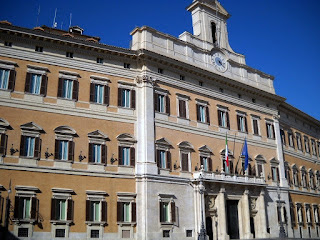Pope Gregory XI returns the papacy to Rome
Important date in Roman and papal history
The French Pope, Gregory XI, returned the papacy to Rome, against the wishes of France and several of his cardinals, on this day in 1377. The move back to Rome was a highly significant act in history as the papacy, from that date onwards, was to remain in the city. Gregory was born Pierre-Roger De Beaufort in Limoges. He was the last French pope, and he was also the last pope to reign from Avignon, where he had been unanimously elected in 1370. He immediately gave consideration to returning the papacy to Rome in order to conduct negotiations for reuniting the Eastern and Western Churches and to maintain papal territories against a Florentine revolt being led by the powerful Visconti family. But Gregory had to shelve his Roman plan temporarily in order to strive for peace between England and France after another phase in the Hundred Years’ War started. However, in 1375, he defeated Florence in its war against the Papal States and the following year, he listened to the pleas of the mystic Catherine of Siena, later to become a patron saint of Italy, to move the papacy back to Rome. Read more…
____________________________________
Antonio Moscheni - Jesuit painter
Unique legacy of chapel frescoes in India
The painter Antonio Moscheni, best known for the extraordinary frescoes he created in the chapel of St Aloysius College in Mangalore, India, was born on this day in 1854 in the town of Stezzano, near Bergamo in Lombardy. St Aloysius, situated in the state of Karnataka in south-west India, was built by Italian Jesuit Missionaries in 1880 and the chapel added four years later. A beautiful building, it would not look out of place in Rome and the Baroque extravagance of Moscheni's work, which adorns almost every available wall space and ceiling, makes it unique in India. The chapel welcomes thousands of visitors each year simply to marvel at Moscheni's art for the vibrancy of the colours and the intricacy of the detail. Scenes depicted include the life of St. Aloysius, who as the Italian aristocrat Aloysius Gonzaga became a Jesuit and was studying in Rome when he died at the age of just 23, having devoted himself to caring for the victims of an outbreak of plague. Also painted are the Apostles, the lives of the Saints and the life of Jesus. Read more…
_______________________________________
Guidobaldo I – Duke of Urbino
Military leader headed a cultured court
Guidobaldo da Montefeltro, who was to become Duke of Urbino, was born on this day in Gubbio in 1472. He succeeded his father, Federico da Montefeltro, as Duke of Urbino in 1482. Guidobaldo married Elisabetta Gonzaga, the sister of Francesco II Gonzaga, Marquis of Mantua, but they never had any children. His court at Urbino was one of the most refined and elegant in Italy where literary men were known to congregate. The writer Baldassare Castiglione painted an idyllic picture of it in his Book of the Courtier. Castiglione was related on his mother’s side to the Gonzaga family of Mantua and represented them diplomatically. As a result he met Guidobaldo, Duke of Urbino, and later took up residence in his court among the many distinguished guests. During this time Castiglione also became a friend of the painter, Raphael, who painted a portrait of him that is now in The Louvre in Paris. Castiglione’s book, Il Libro del Cortegiano, was written in the form of an imaginary dialogue between Elisabetta Gonzaga and her guests and provides a unique picture of court life at the time. It was published in 1528, the year before he died. Read more…
______________________________________
Antonio del Pollaiuolo – artist
Paintings of muscular men show knowledge of anatomy
Renaissance painter, sculptor, engraver and goldsmith Antonio del Pollaiuolo was born on this day in 1433 in Florence. He was also known as Antonio di Jacopo Pollaiuolo and sometimes as Antonio del Pollaiolo. The last name came from the trade of his father who sold poultry. Antonio’s brother, Piero, was also an artist and they frequently worked together. Their work showed classical influences and an interest in human anatomy. It was reported that the brothers carried out dissections to improve their knowledge of the subject. Antonio worked for a time in the Florence workshop of Bartoluccio di Michele where Lorenzo Ghiberti - creator of the bronze doors of the Florence Baptistery - also received his training. Some of Antonio’s paintings show brutality, such as his depiction of Saint Sebastian, which he painted for the Church of Santissima Annunziata in Florence and presents muscular men in action. His paintings of women show more calmness and display his meticulous attention to fashion details. Antonio was also successful as a sculptor and a metal worker and although he produced only one engraving, The Battle of the Nude Men, it became one of the most famous prints of the Renaissance. Read more…

.jpg)
.jpg)
_02.jpg)




.jpg)
.jpg)
.jpg)

.jpg)

.png)
_(cropped).jpg)





.jpg)
.png)

.jpg)
.jpg)







%20(2).jpg)
.jpg)